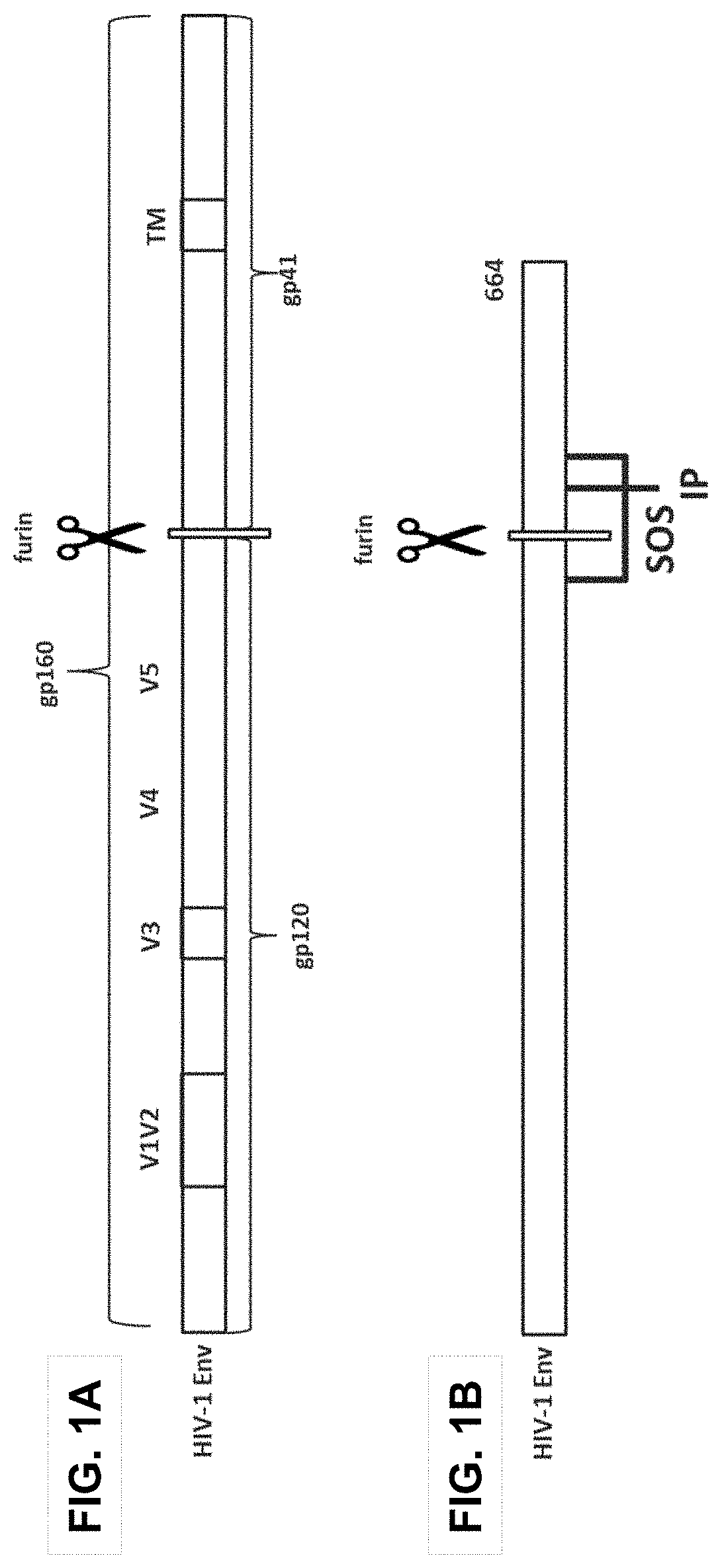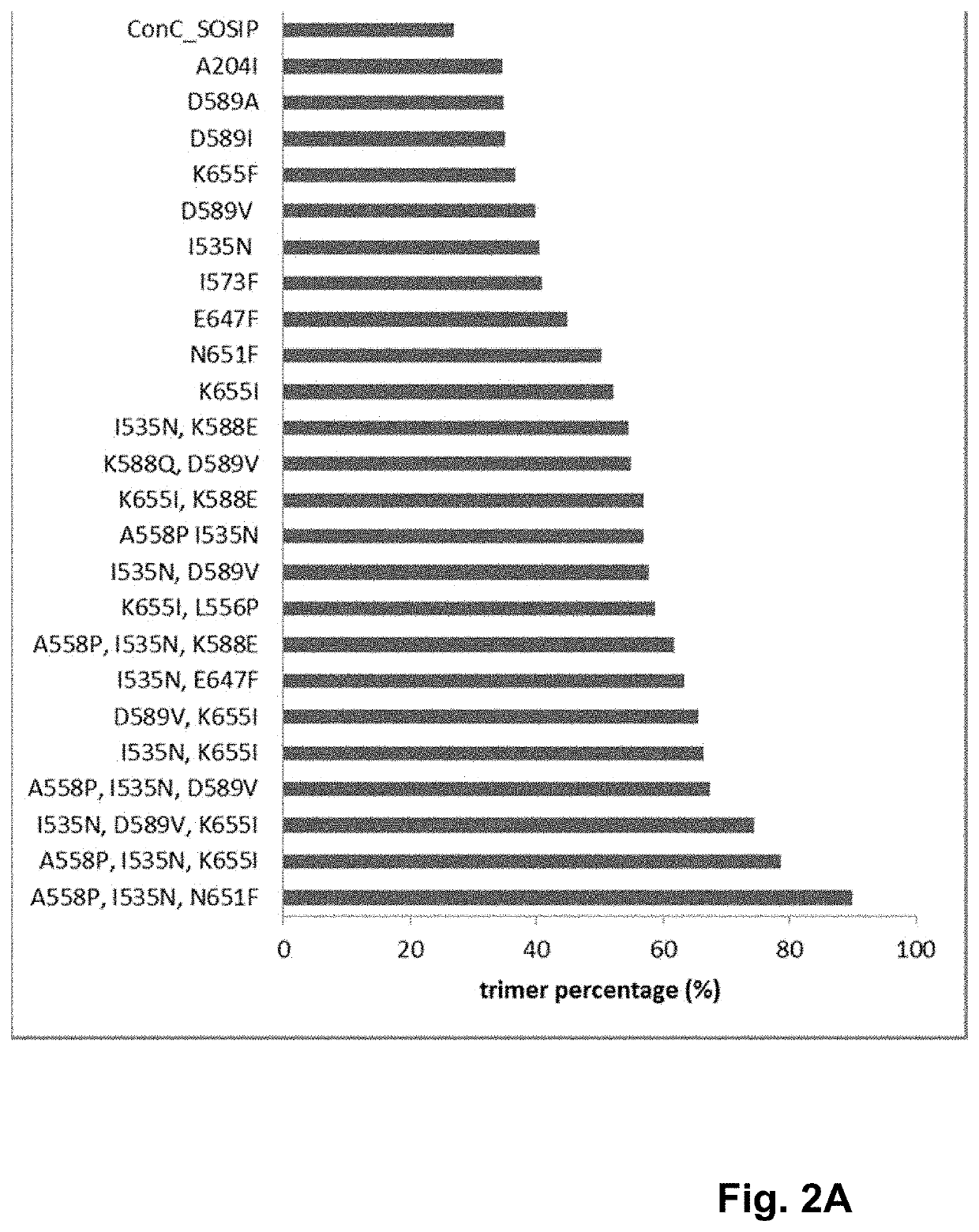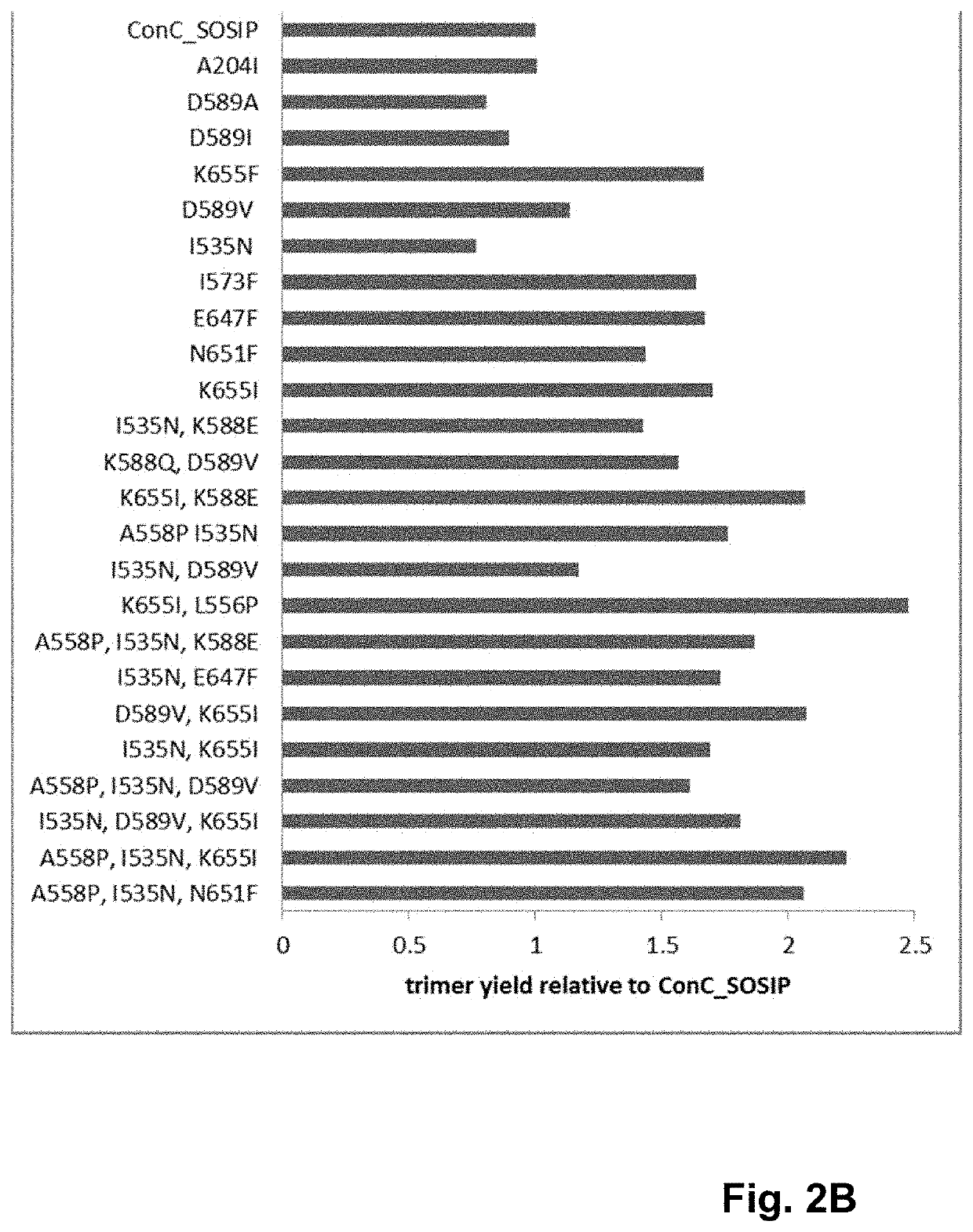Trimer stabilizing HIV envelope protein mutations
a technology of hiv envelope and protein, applied in the field of trimer stabilizing hiv envelope protein mutation, can solve the problems of difficult development of a hiv vaccine based on the envelope protein, unstable wild-type envelope protein, difficult to broaden the application range of the vaccine, etc., to optimize the folding and stability of prefusion-closed hiv-1 envelope trimers, improve the percentage of trimer formation, and improve the yield
- Summary
- Abstract
- Description
- Claims
- Application Information
AI Technical Summary
Benefits of technology
Problems solved by technology
Method used
Image
Examples
example 1
Generation of HIV Envelope Clade C and Clade B Consensus Sequence
[0290]HIV Envelope Clade C Consensus Sequence
[0291]An HIV clade C envelope (Env) protein consensus sequence was developed as the backbone sequence for studying the effects of various mutations on trimer formation of the HIV Env proteins. A sequence alignment of 3,434 envelope protein sequences from known HIV viral isolates was downloaded from the Los Alamos Database (http: / / www.hiv.lanl.gov / content / index). From the 3,434 sequences, 1,252 sequences of clade C only were selected to generate the HIV clade C Env protein consensus sequence. At positions for which a consensus residue could not be clearly identified based on the alignment, the consensus sequence was used to identify the closest wild-type sequences by a BLAST search. The consensus residue at these positions was then selected as the amino acid in the closest wild-type sequences identified from the BLAST search. The HIV Env clade C consensus sequence is shown in...
example 2
Expression and Purification of Recombinant HIV Env Protein
[0297]Recombinant HIV Env proteins were expressed and purified as soluble gp140 proteins. Single mutations (amino acid substitutions) and combinations thereof (e.g., double and triple mutations) were introduced into the ConC_SOSIP backbone consensus sequence to generate a series of recombinant HIV Env protein variants.
[0298]Generation and Expression of HIV gp140 Env Constructs and Variants
[0299]DNA encoding the HIV clade C Env consensus sequence ConC_SOSIP shown in SEQ ID NO: 3 was synthesized and codon-optimized at GenScript (Piscataway, N.J. 08854) or Gene Art (Life Technologies, Carlsbad, Calif.). The codon-optimized sequence was then cloned into the vector pcDNA2004 to generate an HIV clade C gp140 Env construct, which was used as the backbone HIV envelope sequence for introducing further mutations. Mutations were introduced into the ConC_SOSIP backbone sequence by site directed mutagenesis and polymerase chain reaction (...
example 3
Screening of Recombinant HIV gp140 Env Variants for Trimer Yield and Percentage of Trimer Formation
[0305]The recombinant HIV Env protein variants generated in Example 2 were screened for trimer formation to identify those mutations that improved the percentage of trimer formed and / or improved trimer yields relative to the ConC_SOSIP backbone sequence. High throughput screening of trimer percentage and trimer yields was conducted using an AlphaLISA assay to evaluate the binding of a panel of broadly neutralizing HIV antibodies (bNAbs) and non-bNAbs to the recombinant HIV Env proteins. The results of the AlphaLISA assay were confirmed by size exclusion chromatography and multi-angle light scattering (SEC-MALS).
[0306]AlphaLISA® Assay Analysis
[0307]Total expression of the HIV gp140 Env protein and the total amount of correctly folded native trimer of over 200 HIV gp140 variants with single amino acid substitutions introduced into the ConC_SOSIP sequence generated as described in Example...
PUM
| Property | Measurement | Unit |
|---|---|---|
| distance | aaaaa | aaaaa |
| pH | aaaaa | aaaaa |
| pH | aaaaa | aaaaa |
Abstract
Description
Claims
Application Information
 Login to View More
Login to View More - R&D
- Intellectual Property
- Life Sciences
- Materials
- Tech Scout
- Unparalleled Data Quality
- Higher Quality Content
- 60% Fewer Hallucinations
Browse by: Latest US Patents, China's latest patents, Technical Efficacy Thesaurus, Application Domain, Technology Topic, Popular Technical Reports.
© 2025 PatSnap. All rights reserved.Legal|Privacy policy|Modern Slavery Act Transparency Statement|Sitemap|About US| Contact US: help@patsnap.com



